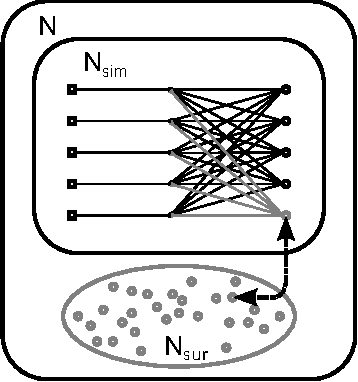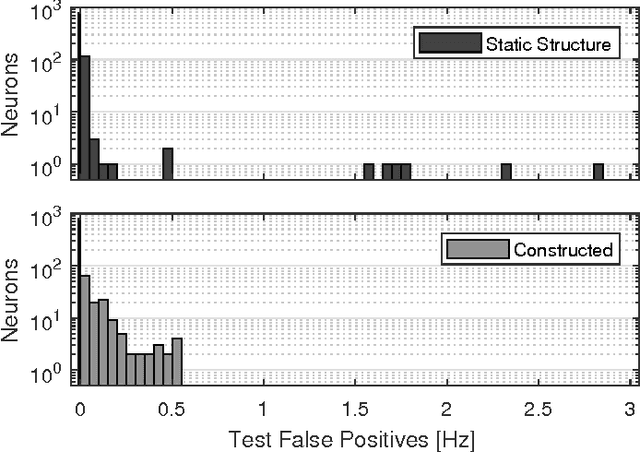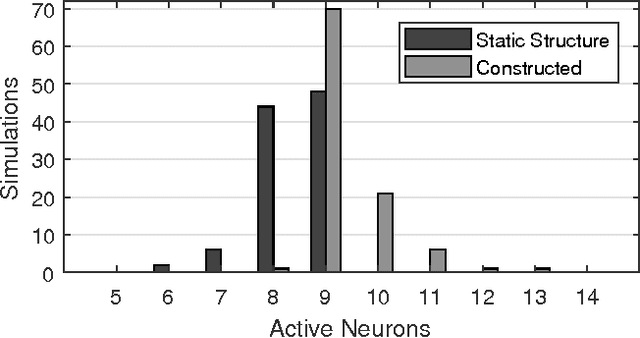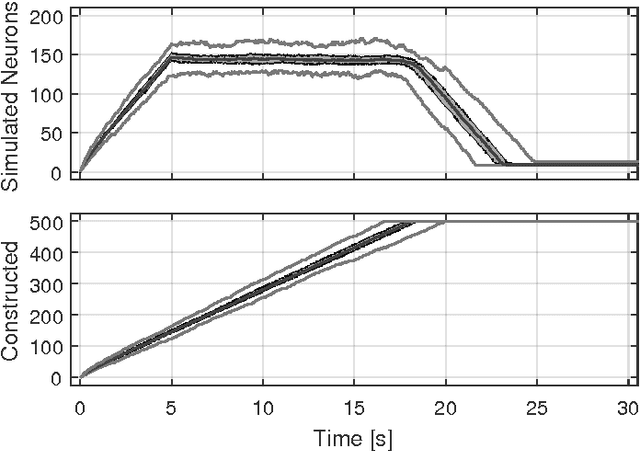Toby Lightheart
Continual One-Shot Learning of Hidden Spike-Patterns with Neural Network Simulation Expansion and STDP Convergence Predictions
Aug 30, 2017



Abstract:This paper presents a constructive algorithm that achieves successful one-shot learning of hidden spike-patterns in a competitive detection task. It has previously been shown (Masquelier et al., 2008) that spike-timing-dependent plasticity (STDP) and lateral inhibition can result in neurons competitively tuned to repeating spike-patterns concealed in high rates of overall presynaptic activity. One-shot construction of neurons with synapse weights calculated as estimates of converged STDP outcomes results in immediate selective detection of hidden spike-patterns. The capability of continual learning is demonstrated through the successful one-shot detection of new sets of spike-patterns introduced after long intervals in the simulation time. Simulation expansion (Lightheart et al., 2013) has been proposed as an approach to the development of constructive algorithms that are compatible with simulations of biological neural networks. A simulation of a biological neural network may have orders of magnitude fewer neurons and connections than the related biological neural systems; therefore, simulated neural networks can be assumed to be a subset of a larger neural system. The constructive algorithm is developed using simulation expansion concepts to perform an operation equivalent to the exchange of neurons between the simulation and the larger hypothetical neural system. The dynamic selection of neurons to simulate within a larger neural system (hypothetical or stored in memory) may be a starting point for a wide range of developments and applications in machine learning and the simulation of biology.
 Add to Chrome
Add to Chrome Add to Firefox
Add to Firefox Add to Edge
Add to Edge